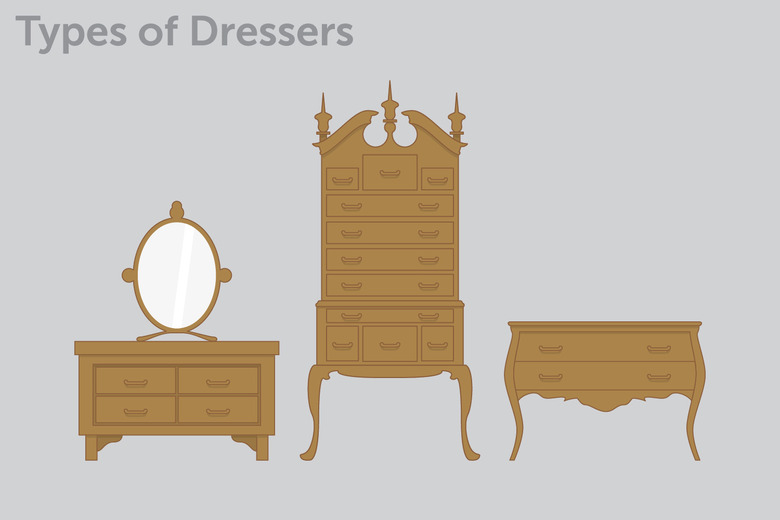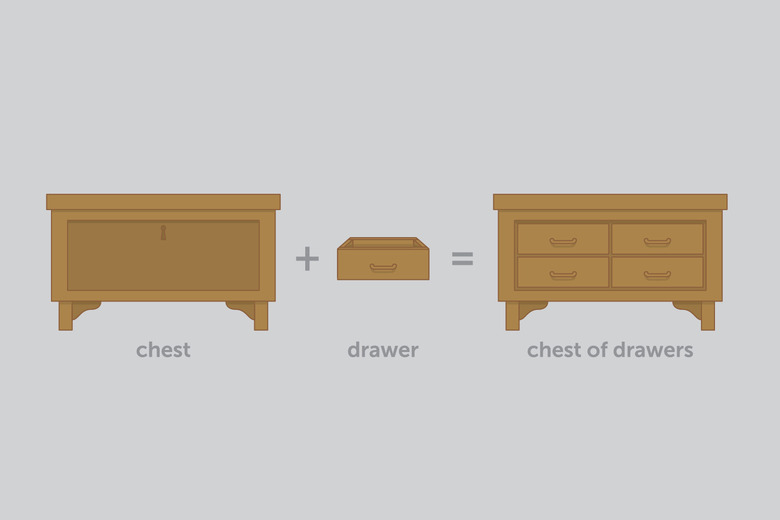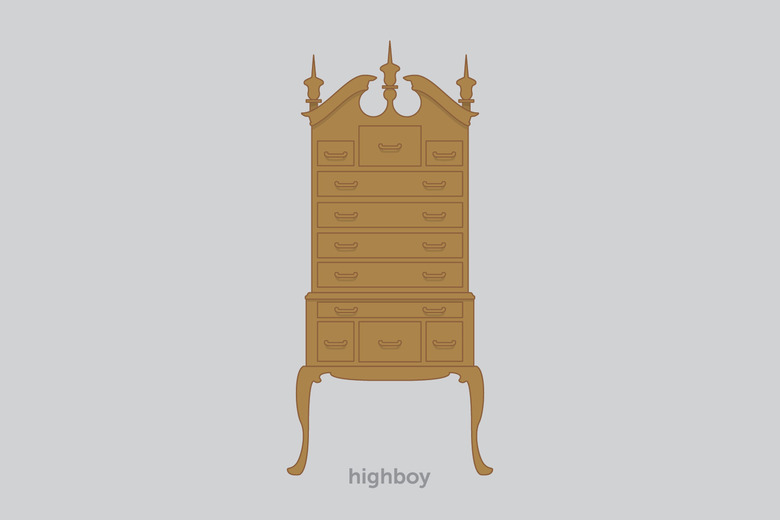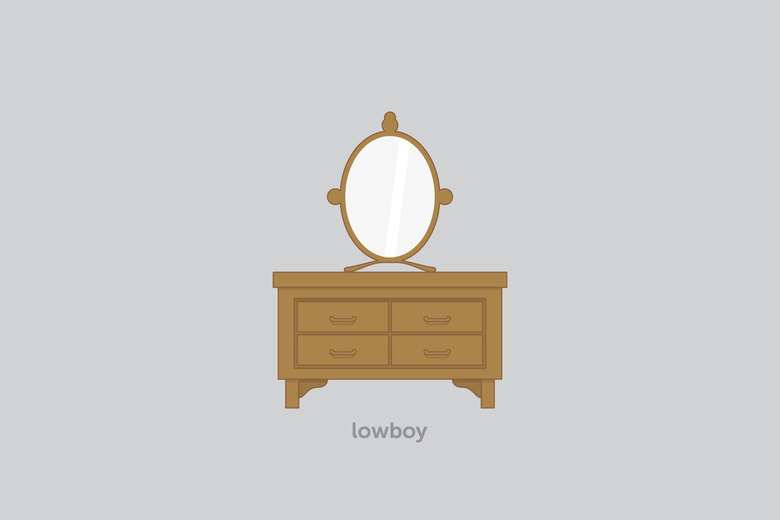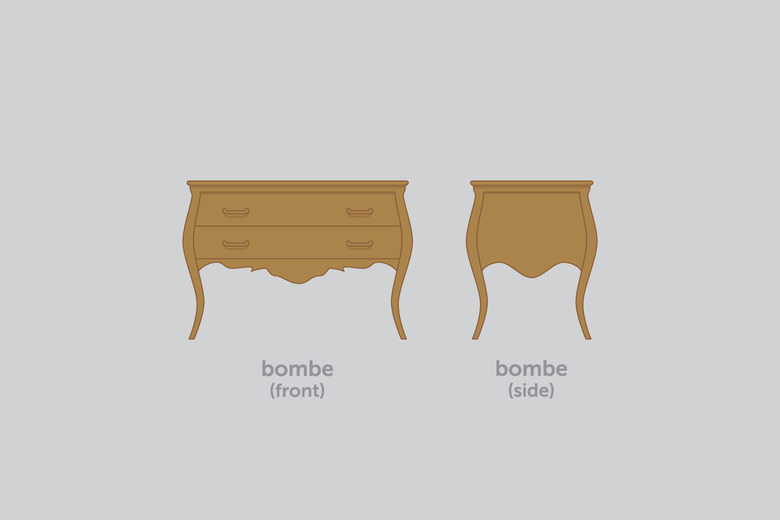Types Of Dressers
Dressers have many aliases that describe the different types: highboy, lowboy, chest of drawers, vanity and commode, to name a few. Although a dresser and a chest of drawers essentially function the same way, the difference lies in how the piece is designed. A standard dresser is typically waist high and wider than it is deep. A chest of drawers is taller, usually chest high with a single column of drawers. The shape of the body and the drawer fronts help define the dresser's style.
Evolution of Dressers
Evolution of Dressers
The earliest dressers were simple wooden chests, which evolved into traditional pieces of furniture of great importance, such as Bible boxes, dowry chests and painted wedding chests. The addition of drawers transitioned personal storage pieces from chests into chests of drawers and dressers. English cabinetmakers came out with the first designs for dressers, setting the standard for American cabinetmakers.
Large and Luxurious
Large and Luxurious
The largest dressers are known as highboys or the British version, tallboys. Also known as a chest-on-chest, highboys are made with two separate pieces — a base chest of drawers supporting an upper chest of drawers. Another version of a highboy, the armoire, has a cabinet as the upper half with drawers underneath. Queen Anne style highboys often stand over 7 feet tall and feature the iconic pediment top, batwing-style brass mounts and a carved apron on the bottom.
Low and Lovely
Low and Lovely
Lowboys are a single, low-profile chest of drawers; essentially a desk-like dresser. A lowboy gives you a waist-high dressing table where you can keep personal toiletries inside and on top. A separate, detachable mirror made the lowboy the predecessor to the vanity table. In France, a dresser or chest of drawers is called a commode. It has a low profile and features decorative elements such as veneers, cabriole legs, marble top and marquetry. These elegant chests became status symbols in French homes.
Common Styles
Common Styles
Bombe dressers have swelling, convex curves on all sides. Serpentine style refers to dressers with wave-like, undulating drawer fronts that form a convex curve between two concave curves. A bow-front dresser features a swelling, convex curve on the front. Breakfront cabinets are distinguished by three sections, with the center extending out further than each side. Straight fronts, typical of most modern dressers, have no curves or extending parts but often feature decorative moldings. A bureau-style dresser combines elements of a desk and chest, with a characteristic slant-top box built over a chest of drawers.
